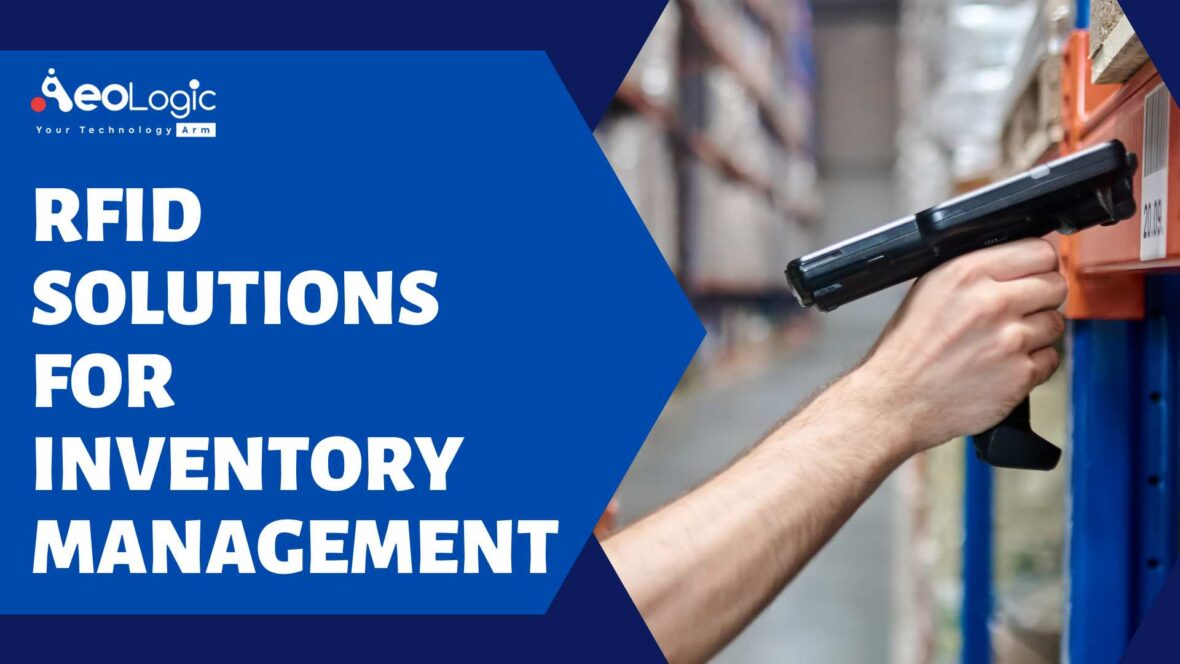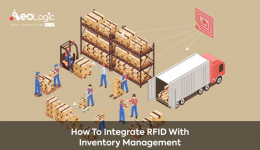Inventory management is an issue that many companies face today. The key to a successful business is to maintain records of your inventory and also make sure your employees do not steal it. That’s why RFID has become such a useful tool in helping you with inventory management. This article will explore how RFID solutions help in inventory management.
Retailers and organizations of every kind use RFID-based inventory management systems to track their inventory instead of handwritten records. The benefits are clear: utilizing RFID tags can make it easier to trace a product as it moves through the distribution network and provides accurate information about its location. But even with all these advantages, some big retailers have been slow on the uptake. To help spur innovation in this area, we have compiled a useful list that explains how RFID software helps improve certain aspects of inventory management.
Table of contents
- What is RFID?
- How Does RFID Help in Inventory Management?
- How RFID works?
- Advantages of RFID in Inventory Management
- Drawbacks of RFID in Inventory Management
- Conclusion
What is RFID?
RFID is a technology that uses radio waves to identify and track objects. RFID solutions can be used in inventory management to track and manage inventory levels, as well as to monitor the movement of goods within a warehouse or store. It can also be used to track assets, such as tools or equipment. RFID solutions can help businesses improve their inventory management and asset tracking processes, and can provide significant cost savings.
Also Read: Why Is CRM Software a Game-changer When It Comes to Delivering Better Customer Experiences?
How Does RFID Help in Inventory Management?
RFID solutions in inventory management have helped many businesses keep track of their inventory levels and improve their overall inventory management. Here are some ways that RFID can help your business manage its inventory:
Automated Tracking: RFID tags benefits the inventory items, which allows businesses to automatically track their whereabouts. This information can be used to optimize stock levels, minimize losses due to theft or misplaced items, and ensure that products are available when customers need them. (Diazepam)
Improved Accuracy: Since RFID tags can be read electronically, businesses can get more accurate information about their inventory levels than they would from manual methods like bar-coding. This improved accuracy can lead to better decision-making about stock levels and ordering new products.
Increased Productivity: Automating the tracking of inventory with RFID can free up employees’ time for other tasks, such as serving customers or restocking shelves. This increased productivity can help businesses improve their bottom line.
Reduced Costs: Implementing an RFID solution in inventory can save businesses money by reducing the need for manual inventory management tasks like counting and bar-coding items. Additionally, RFID can help businesses save on product losses due to theft or misplaced items.
Also Read: 10 Ways to Use Artificial Intelligence to Improve Business Processes
How RFID works?
Tag Products
RFID labels are used to identify inventory and items. RFID labels may only be attached at the highest unit of measurement, such as a pallet, depending on the business case. In other circumstances, RFID labels may be affixed at the case or item level. Each RFID label has a unique serial number. It is common practice to utilize an RFID printer to automatically print and encode RFID labels.
RFID Reader
The strategic RFID read sites gather the movement of items as they move around the warehouse and distribution center. RFID handhelds can also be used to do cycle counts or physical inventory counts. The main advantage over a barcode or manual count is the speed with which data is collected.
Read: The Role of AI in Education And Learning: Just Promises Or Revolution
Collection of Data
The data collected can help with business conversations such as inventory tracking throughout a facility or inventory level management. Furthermore, the ability to conduct cycle counts and physical inventory counts in a more cost-effective and efficient manner results in immediate knowledge of deviations.
Aeologic’s RFID solutions in inventory management can help you save money on your inventory.
Advantages of RFID Solutions in Inventory Management
The following are some of the advantages of using RFID tags in inventory management:
Lower labour costs: Labor costs are eliminated because the tags automatically produce and submit information when scanned by an AIDC system.
No sight requirements: RFID tags, like barcodes, work independently of line-of-sight systems. Workers do not have to turn boxes to align barcodes, apply barcodes, or deal with damaged barcodes, in other words.
Enhances visibility: More information processed and captured results in increased visibility throughout your supply chain.
More information: More information offers obvious advantages for product monitoring and tracing, as well as keeping consumers, retail partners, and other supply chain partners informed.
Scanned Faster: RFID tags can also process and catalog data faster than the most advanced handheld barcode scanners.
Damage Resistant: RFID tags are less likely to be destroyed throughout the packaging, shipping, and receiving process because of their structure, which is generally in plastic or hard shells.
Prevents over/understocking: RFID tags, because they track everything, can minimize stocking concerns and boost security at your facilities.
Also Read: The Role & Benefits of ERP in Supply Chain Management
Drawbacks of RFID Solutions in Inventory Management
RFID technology has numerous potential benefits when it comes to inventory management, but there are also some potential downsides that should be considered. Among these are:
Cost: The expense of implementing an RFID system could be a major downside to using such a system to track inventory. The initial investment in RFID tags, scanners, and a system can be substantial.
Concerns About Privacy: It’s also possible that RFID inventory management systems will cause people to worry about their personal information being compromised. This is because technology allows for the surveillance of individuals and their property.
Interference: Radio frequency identification (RFID) tags used in stock management can experience interference from other equipment, including microwaves and mobile phones. This may lead to inaccuracies and a decrease in the technology’s reliability.
Demands on the Infrastructure: Last but not least, RFID inventory management systems need a particular setup to function successfully. Power, connectivity, and physical location are all factors to consider. This presents a difficulty for some businesses and may restrict their adoption of RFID technology.
Also Read: Information Technology to Support the New Values of the EV
Conclusion
RFID tracking inventory management is one of the most advantageous ways to maximize productivity and reduce errors. This method has proven to be very effective in many companies throughout the world, and its benefits make it a perfect choice for any business that needs effective inventory management. The addition of RFID solutions in inventory management can help you to tackle the issues that plague inventory management, improving your inventory efficiency. It’s an ideal choice for medium and large-sized facilities or warehouses with unique needs.
You may quickly expand your company using the RFID Solution. Ask for a free trial of Aeologic’s software and see how RFID, the best option, can help your company expand.
Aeologic is a great place to start!
Also Read: Trends in Sensor Technology and the Electric Vehicle Industry Related Blogs:
- How AI/ML Can Change the Public Transportation Industry
- Transforming Business With Digital Technology in the Oil Palm Industry in India
- Importance of Digital Asset Management in the Retail Industry
- How AI is Transforming the Agriculture Industry
- 10 Ways to Use Artificial Intelligence to Improve Business Processes
- The Future of IoT Technology in Convenience Stores
- Building Manufacturing Resilience Through AI and ML






